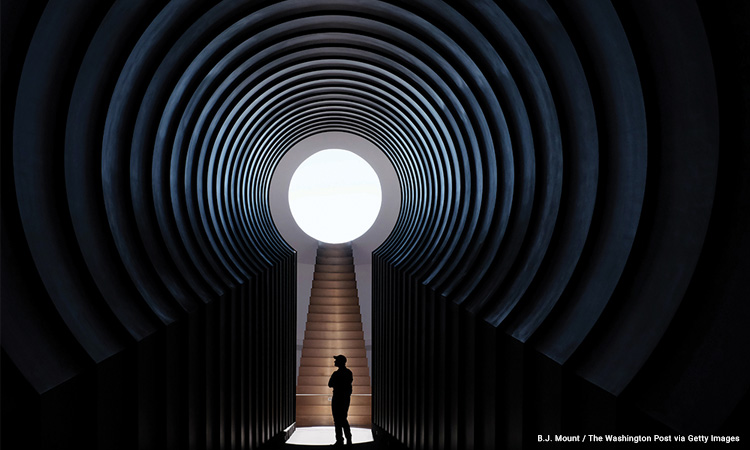 The Alpha (East) Tunnel of Roden Crater, the monumental work being created by artist James Turrell in an extinct volcano in Prescott, AZ, USA. Within the crater, tunnels and apertures open onto the sky above, capturing light from the sun in daylight hours, and the planets and stars at night. [Image: B.J. Mount / The Washington Post via Getty Images]
The Alpha (East) Tunnel of Roden Crater, the monumental work being created by artist James Turrell in an extinct volcano in Prescott, AZ, USA. Within the crater, tunnels and apertures open onto the sky above, capturing light from the sun in daylight hours, and the planets and stars at night. [Image: B.J. Mount / The Washington Post via Getty Images]
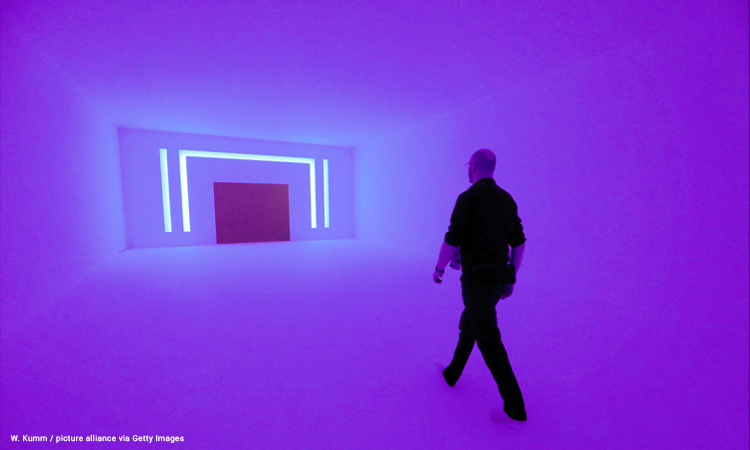 Ganzfeld: Aural 2018, James Turrell, Jewish Museum Berlin, Germany [W. Kumm / picture alliance via Getty Images]
Ganzfeld: Aural 2018, James Turrell, Jewish Museum Berlin, Germany [W. Kumm / picture alliance via Getty Images]
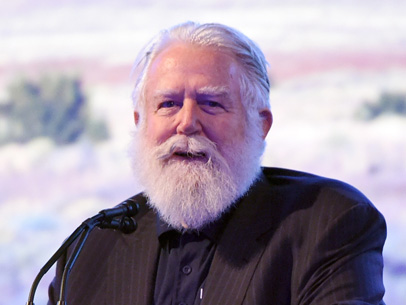 [J. Merritt / Getty Images for LACMA]
[J. Merritt / Getty Images for LACMA]
James Turrell
James Turrell is an American artist known for his work with light, color and space. Often referred to as the “master of light,” for more than half a century he has been transforming spaces with ever-shifting, ever-changing color, frequently mixing natural light with artificial color.
INSPIRATION: As a veteran pilot, Turrell has found inspiration in the quality of light experienced from the sky. His personal interests in aviation, geometry and astronomy are evident in his work. Rooted in the traditions of his Quaker upbringing, Turrell’s artwork invites visitors to go inside and greet the light.
FEATURED ARTWORK: In Ganzfeld: Aural, Turrell uses colorful ambient lighting in an all-white space to play with the viewer’s sense of perception. Ganzfeld is named after the Ganzfeld Effect, a perceptual phenomenon that occurs when one’s field of vision becomes entirely featureless. Turrell’s space is designed to suspend the viewer in sensory confusion. The carefully selected lighting and changing color hues blur our signals for depth, shape and distance, erasing the distinction between what is real and what we perceive as real.
FORWARD: Turrell’s most ambitious project is Roden Crater, an observatory being created inside an extinct volcano in Prescott, AZ, USA. Representing the culmination of his lifelong research in the field of human visual and psychological perception, Roden Crater is a controlled environment for experiencing and contemplating light. Since acquiring the crater in 1977, Turrell has created special engineered spaces. Tunnels and apertures open onto the sky above, capturing light from the sun in daylight hours, and the planets and stars at night.
website: rodencrater.com | instagram: #jamesturrell
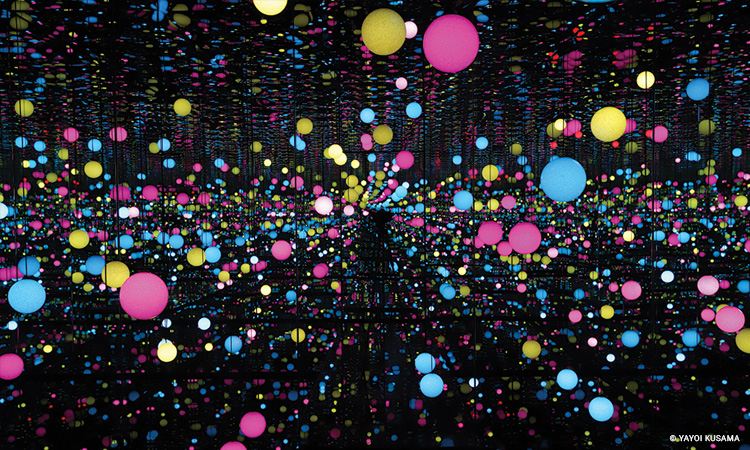 Infinity Mirrored Room–Brilliance of the Souls 2014, Yayoi Kusama [© YAYOI KUSAMA]
Infinity Mirrored Room–Brilliance of the Souls 2014, Yayoi Kusama [© YAYOI KUSAMA]
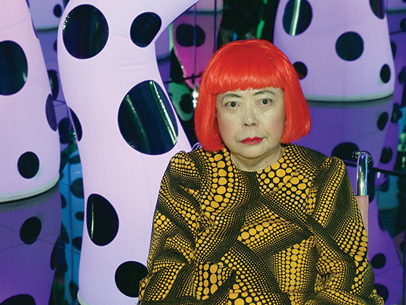 [A. Toth / Getty Images]
[A. Toth / Getty Images]
Yayoi Kusama
For more than 75 years, Yayoi Kusama, a Japanese sculptor, painter, fashion designer, performance artist and poet, best known for her love of polka dots and her infinity mirror rooms that explore infinite space, has been following her calling to create art to “fight for love and understanding in the mystery of human life.”
INSPIRATION: When Kusama was around 10 years old, she began to experience vivid hallucinations, which she has described as “flashes of light, auras or dense fields of dots.” Throughout her life, art has been a coping mechanism for these obsessions and repetitions, as well as an opportunity to spread her message of love and hope. In her infinity rooms, Kusama shares this hope by inviting us into an endless space that transforms our expected perceptions of space, time and self.
FEATURED ARTWORK: In Infinity Mirrored Room–Brilliance of the Souls, viewers find themselves immersed in a mystical and infinite space. Colorful, LED-illuminated orbs are suspended at various heights and intervals and are endlessly reflected by mirrors and water. The never-ending orbs are reminiscent of stars, planets and galaxies and transport the viewer into the expansive spread of the universe.
FORWARD: A new exhibit at the Yayoi Kusama Museum in Tokyo, Japan, focuses on the diverse trajectories of Kusama’s figurative works from the 1940s to the present (27 April to 1 September 2024). An upcoming retrospective at NGV International in Melbourne, Australia, will include 180 works spanning Kusama’s tremendous eight-decade career (15 December 2024 to 21 April 2025).
website: yayoi-kusama.jp
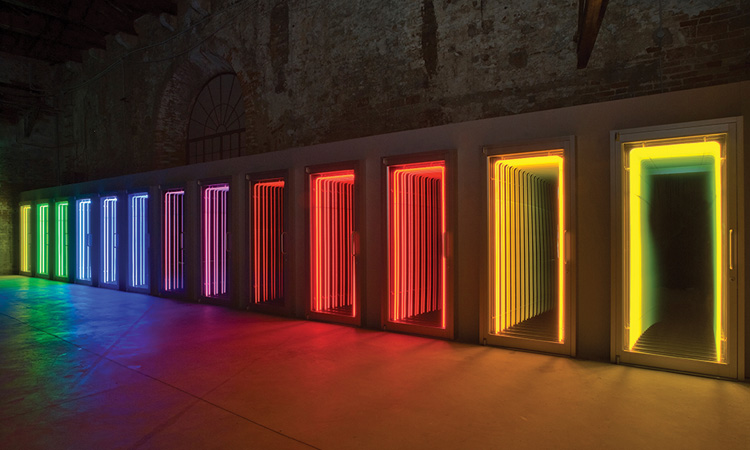 Death Row 2006–2009, Iván Navarro, Chile Pavilion, Venice Biennale, Venice, Italy, 2009 [© Sebastian Luciano]
Death Row 2006–2009, Iván Navarro, Chile Pavilion, Venice Biennale, Venice, Italy, 2009 [© Sebastian Luciano]
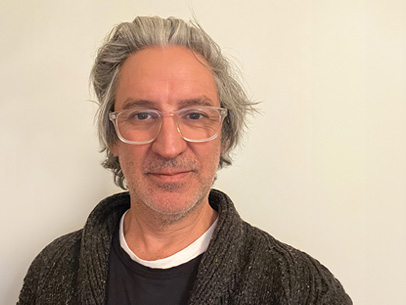 [Courtesy of Iván Navarro]
[Courtesy of Iván Navarro]
Artist
Chilean artist Iván Navarro’s electric sculptures create the illusion of space where in reality there is none—suggesting infinity through carefully placed neon lights and mirrors.
INSPIRATION: Navarro’s childhood experience growing up in Chile under the military dictatorship of General Augosto Pinochet is visible in the themes of authority, danger and control that permeate his work. Under Pinochet, everyday life was beset by government-ordered water and electricity cuts, as well as the fear of torture with electrical devices. The electricity present in Navarro’s artwork evokes the curfew he underwent for years and the control Pinochet exerted over the Chilean population. The added illusion of depth comes from his desire to find a state of perception that transcends that reality.
FEATURED ARTWORK: Death Row is based on Ellsworth Kelly’s 1969 Spectrum V. Navarro’s row of 13 doors with neon light repeat the same colors in the same sequence as the 13 original painted panels of Spectrum V. Using Kelly’s work as a guide through which to create new depths, in Death Row Navarro aims to “create and reveal an unknown space, beyond the impenetrable surfaces of Kelly’s painting—activating or giving life to a hidden space, which is otherwise dead behind the surface of the gallery wall.”
FORWARD: Navarro has been appointed as the associate artist for the Grand Paris Express artistic program, working in collaboration with architect Dominique Perrault on the future Gare de Villejuif - Institut Gustave Roussy, Paris, France, which is scheduled to open in 2025.
website: ivan-navarro.com | instagram: #ivannavarro
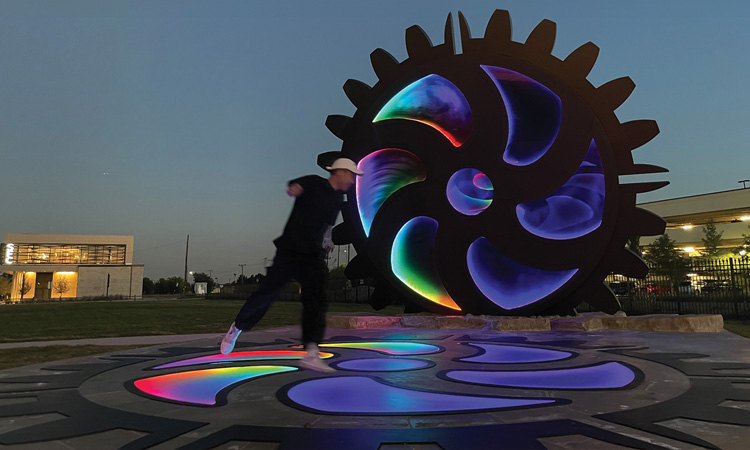 Boundless, Jen Lewin, Dream Park, Arlington, TX, USA, 2023 [Photo by Skye Reich]
Boundless, Jen Lewin, Dream Park, Arlington, TX, USA, 2023 [Photo by Skye Reich]
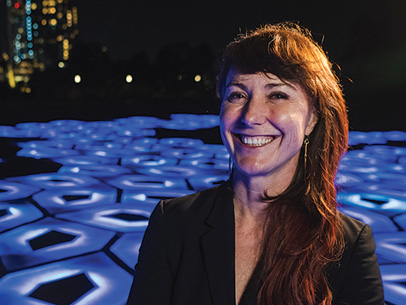 [Courtesy of Jen Lewin Studio]
[Courtesy of Jen Lewin Studio]
Jen Lewin
Jen Lewin is an American installation artist known for creating public, interactive light landscapes around the world. Her aim is to unite communities through immersive art experiences.
INSPIRATION: Drawing inspiration from the intricate forms of nature, Lewin integrates light and sound to captivate and engage viewers. By strategically placing interactive installations in communal spaces, she encourages spontaneous play and strengthens the fabric of community bonds. “In today’s world, where current generations are deeply connected to technology and naturally gravitate toward systems that enable participation,” Lewin says, “my work is designed to bring people together in a direct, playful and connected way.”
FEATURED ARTWORK: Boundless combines two distinct components: a towering glass and aluminum standing gear and a glass and steel in-ground gear. The 12-foot-tall standing gear, constructed with infinity mirrors, creates patterns of light and motion that respond to user engagement. The interactive in-ground gear comes alive with color and light, responding to the movements of participants as they walk, dance and interact with its surface.
FORWARD: Phronesis, a permanent installation for the Cincinnati Public Library, OH, USA, will feature towering pillars of light, drawing inspiration from the eight principles of ancient Greek philosophy translated into binary code. In Sioux Falls, SD, USA, Cyclicality will feature 11 interactive dichroic crystals that integrate the intricate beauty of crystal formations and the dynamic processes of rock metamorphism.
website: jenlewinstudio.com | instagram: jenlewinstudio
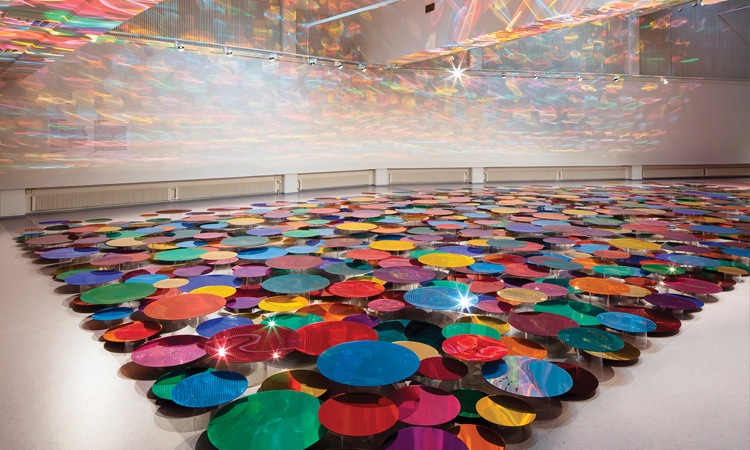 Our Colour Reflection 2016, Liz West, Hyvinkaa Art Museum, Finland, 2020 [© Jussi Tiainen ]
Our Colour Reflection 2016, Liz West, Hyvinkaa Art Museum, Finland, 2020 [© Jussi Tiainen ]
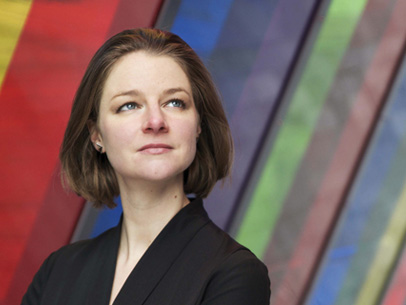 [Courtesy of Liz West]
[Courtesy of Liz West]
Liz West
Liz West is a British artist who creates vivid environments that mix luminous color and radiant light to explore how sensory phenomena can invoke psychological and physical responses that tap into an individual viewer’s relationship to color.
INSPIRATION: As an artist, West walks around with her eyes wide open, “taking inspiration from the architecture, design and art that is all around us.” She loves “people watching and seeing how we navigate, traverse and move through the spaces we inhabit.” West appreciates the geometry, shapes, color, blends and patterns in our surroundings and how the light changes depending on the weather and the seasons. In addition, the work of artists who use the media of color and light in combination have resonated with West and have had a direct effect on the scale, ambition and form of her work.
FEATURED ARTWORK: Our Colour Reflection aims to create a conversation between the viewer and its setting through careful placement of more than 765 mirrors in 15 different colors. The mirrors are set at different heights so that they reflect both the structure of the space and the people who inhabit it, revealing parts of the architecture that would otherwise be invisible and projecting color up into the interior. The work places the audience at the forefront, demanding a physical, emotional or even spiritual response.
FORWARD: A new exhibition titled “Your Kaleidoscope” in Chester Cathedral, Chester, UK, will include two ambitious installations, Hymn to the Big Wheel and Presence, together for the first time (August 2024).
website: liz-west.com | instagram: lizweststudio
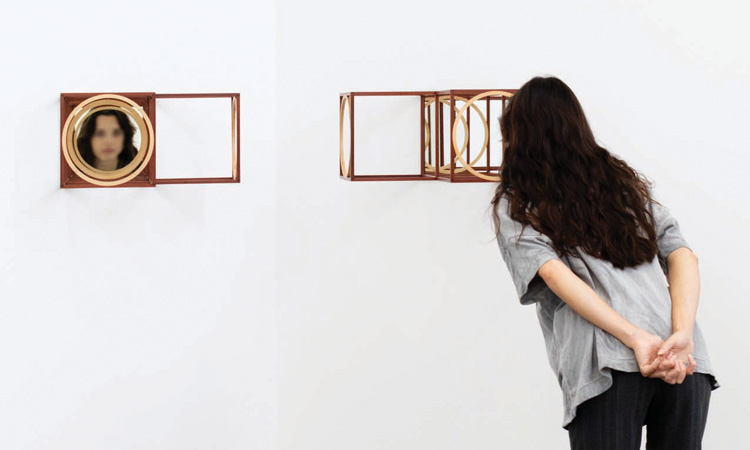 Youturn, Natasha Johns-Messenger, Winner 2023 EQUS Quantum Art Competition, Australia [Photo by Hayden Stuart]
Youturn, Natasha Johns-Messenger, Winner 2023 EQUS Quantum Art Competition, Australia [Photo by Hayden Stuart]
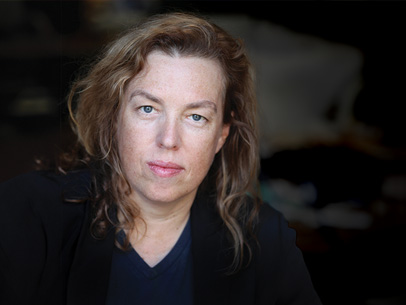 [Photo by Jacqueline Mitelman]
[Photo by Jacqueline Mitelman]
Natasha Johns-Messenger
Natasha Johns-Messenger is an Australian-American installation artist and filmmaker. With a primary interest in perception and site, she creates body-scaled architectural interventions and optical works.
INSPIRATION: Profound questions about what is real and the nature of reality in relation to perception are core interests of Johns-Messenger: “What is real in our perception? How does our reality align with the complexities and paradoxes of quantum mechanics?” Within an exploration of the concepts of phenomenology and perception, she aims to question our expectations of space and invites us to contemplate the trustworthiness of our perceptions, reminding us that “we all play a role in authoring our world.”
FEATURED ARTWORK: Youturn explores quantum duality through the deliberate use of identical structures and periscopic mirrors. The repurposed hardwood frames, containing cubes made from red gum wood with concentric circles of celery-top pine, serve as a geometric framing. They create a periscope illusion that challenges the boundaries of reality, as if the artwork extends through the wall and back out again via the opposite corner. As participant-viewers engage, the installation prompts a range of possible positions until observed, reflecting the uncertainty inherent in quantum phenomena.
FORWARD: Johns-Messenger is currently working on a sculpture for Ruffey Lake Park in Victoria, Australia. EllipseCircleView 2024 will feature two intertwined stainless steel forms, a circular structure and an ellipse, with changing views that bring the observer into the artwork and encourage contemplation.
website: natashajohnsmessenger.com | instagram: natashajohnsmessenger
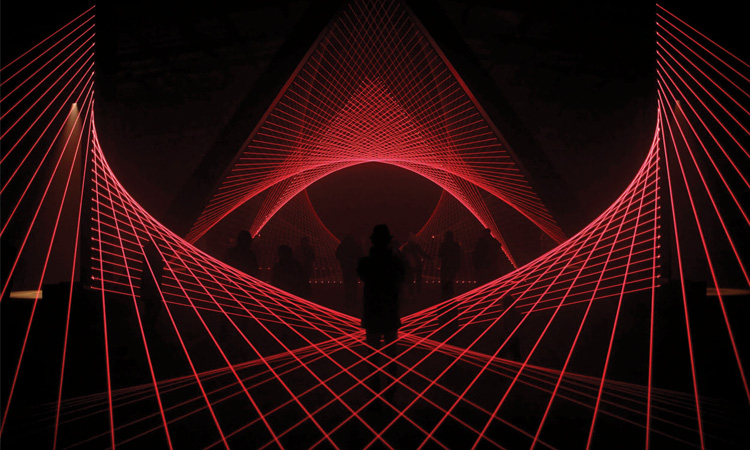 Leviathan, Matthew Schreiber, Dark MOFO Festival, Hobart, Tasmania, Australia, 2018 [Courtesy of Matthew Schreiber]
Leviathan, Matthew Schreiber, Dark MOFO Festival, Hobart, Tasmania, Australia, 2018 [Courtesy of Matthew Schreiber]
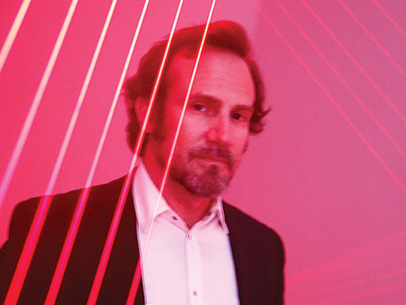 [B. Ach / Stringer]
[B. Ach / Stringer]
Matthew Schreiber
Matthew Schreiber is an American artist known for his large-scale laser light sculptures and for his work in holography. His art is based on geometry, physics and an interest in the basic principles of nature that has led to a deep and continued investigation of light.
INSPIRATION: Since childhood, Schreiber has had a dual interest in art and science. At age seven, inspired by works of science fiction and fantasy, Schreiber attempted to construct his first laser. By age 15, he had created his first laser installation. In college, Schreiber began exploring with holograms and was so awed by the experience that he began integrating the principles of holography into his installations. Schreiber maintains an optical and holography laboratory in Brooklyn, NY, USA, which continues to feed and inspire his art.
FEATURED ARTWORK: Leviathan is a geometrical sculpture created from lasers, ambient light and atmospheric haze. Nothing moves or has computer control, and there is no sound. However, because of the light and haze within the work, the angle of view completely changes the form, similar to the movement of reflections off of distorted glass.
FORWARD: Schreiber is currently focused on an exhibition of holography that he has been planning for years. The exhibition, titled “Sculpting with Light: Contemporary Artists and Holography,” is part of a Southern California–wide exhibition, “PST Collisions of Art and Science,” and will be held at the Getty, Los Angeles, CA, USA (20 August to 24 November 2024).
website: matthewschreiber.com | instagram: matthewschreiberart
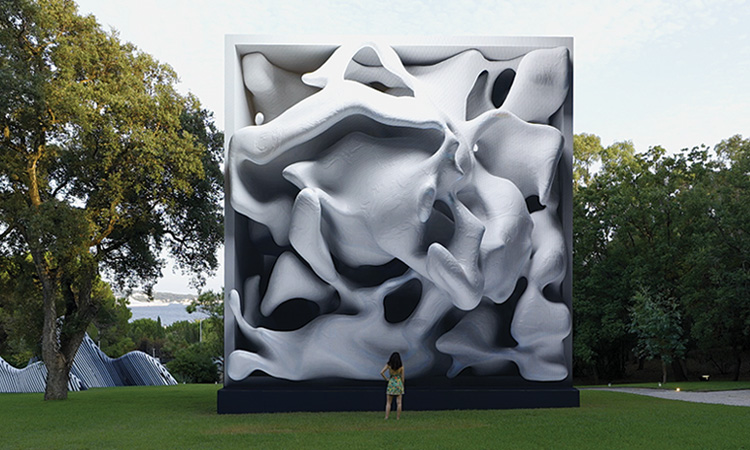 Sense of Healing: AI Data Sculpture, Refik Anadol, UNICEF Charity Gala, Capri, Italy, 2022 [Courtesy of Refik Anadol Studio]
Sense of Healing: AI Data Sculpture, Refik Anadol, UNICEF Charity Gala, Capri, Italy, 2022 [Courtesy of Refik Anadol Studio]
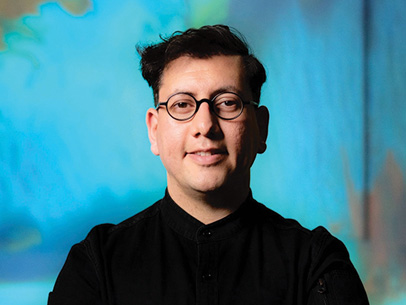 [Courtesy of Refik Anadol Studio]
[Courtesy of Refik Anadol Studio]
Refik Anadol
Refik Anadol is a Turkish-American artist known for 3D data sculptures and paintings, live audio/visual performances and immersive installations that use machine intelligence to take varied virtual and physical forms. He is the founder of Refik Anadol Studio and RAS LAB, the studio’s research practice centered on discovering and developing approaches to data narratives.
INSPIRATION: Anadol’s exploration into the creative capacities of artificial intelligence comes from a profound curiosity: “If a machine can learn, can it also dream? Can it hallucinate?” These questions have led him to develop visual works that transcend traditional art forms. By harnessing vast datasets and AI algorithms, Anadol seeks to visualize the “dreams” of machines. His works create ethereal landscapes that blur the line between the digital and the physical—inviting the audience to imagine alternative realities where what was once invisible becomes visible.
FEATURED ARTWORK: Sense of Healing is a neurotherapeutic AI data sculpture that combines neuroscience and design to visualize fundamental questions about the architecture of the human brain. Anadol and his team interpreted datasets of brain activities collected with EEG sensors, fMRI and DTI imaging techniques to create a multisensory immersive and therapeutic artwork.
FORWARD: Anadol plans to unveil Dataland, a museum and Web3 platform dedicated to data visualization and AI arts. The first exhibitions will be based on Anadol’s “Large Nature Model,” said to be the world’s first open-source, generative-AI model trained on an extensive dataset of the natural world.
website: refikanadol.com | instagram: refikanadol
Alessia H. Kirkland is OPN's creative director.

